Maana Kiyomizu is a new hospitality destination in Kyoto that offers more than just bed and breakfast. It is the third iteration of Maana Homes, a company established by Hana Tsukamoto and Irene Chang in 2018 to offer soulful short-term stays in restored machiya (traditional Japanese wooden merchant houses), with the goal of both preserving and highlighting the beauty that such historic spaces offer, as well as introducing a mindful modern lifestyle inspired by Kyoto’s traditions.
In Maana Homes’ properties, many of the items come from POJ Studio (Pieces of Japan), a brand founded by Tsukamoto with Tina Koyama in 2020 that works with local artisans to create bespoke lifestyle products, such as oriyoki nesting bowls and noren room dividers. Also unique to the brand are DIY kits that allow consumers to learn about Japanese craft such as Kintsugi (the art of tableware repair with liquid gold) from the comfort of their own homes.
The first two properties – Maana Kyoto and Maana Kamo – offer only accommodation. At Maana Kiyomizu, there not only three suites for rent, but also POJ Studio, the brand’s first brick and mortar space that incorporates a workshop and retail area), and Kissa Kishin, a cafe serving seasonal produce – on thoughtfully crafted tableware, nonetheless.
(Related: Not your usual Thai vacation)
“Maana Kiyomizu is a special project for us, as it connects all the dots we’ve uncovered in Kyoto since the founding of the company. The city is captivating with its historic streetscapes and cultural experiences, but it is Kyoto’s humble way of life that is most intriguing to us. We wanted to create a space that showcases how Kyoto’s traditions can fit beautifully into our modern lives, with the intention to inspire a more mindful way of living. With that in mind, it was important for this project to have more than just accommodations. Having more public spaces, such as a café and store, would allow us to cultivate a creative community and offer guests a complete lifestyle experience,” says Chang.
Maana Kiyomizu is located in a quiet neighbourhood in the heart of Kyoto. The row of four machiyas are blessed with evocative vistas of the Toyokuni Shrine’s thatched roofs amidst lush land. The initial space was so dilapidated that the architects Shigenori Uoya and Takeshi Ikei could only salvage the bare structure. “We saw this as a blank canvas opportunity to really push the boundaries of traditional machiya and create something that feels unexpected and modern, which is very different from Maana Kyoto and Maana Kamo. The result is a seamlessly dramatic living space that calms and awakens our senses at the same time through the juxtaposition of old and new,” expounds Chang, who hopes the project can inspire others to consider repurposing and restoring these timeless artefacts that are being demolished at an alarming rate.
In the middle of renovation processes, textural clay walls were uncovered after a layer of plastic laminate walls was removed where the shop stands. “We decided to restore them. Now it contrasts beautifully with POJ Studio’s modern aesthetics,” says Tsukamoto. She and Chang worked closely with the architects to push the boundaries of experimentation, suggesting innovative ways of using traditional materials. For this project, the founders’ recent obsession of foraging through Kyoto’s antique markets resulted in the choice of plaster, mortar, and Mortex™ mineral micro-mortar to create a polished foil for these treasured finds. “We then layered on muted textures, such as linens, handcrafted Japanese washi, time-worn wood and crackled Shigaraki ceramics,” enumerates Tsukamoto.
Another element of delight comes from the intangible yet evocative light quality in the building from a combination of natural and artificial sources. It embodies the essence of the project - poetic, nuanced and purposeful. “The long and narrow plots of Kyoto machiyas in denser parts of the city make it difficult to find a house with ample natural light. We were committed to bringing in natural light, ventilation, and greenery into these houses through architectural elements, such as double-height light wells, skylights, and interior gardens,” shares Tsukamoto. The shop and café are equally cosy, designed as inviting living and dining spaces.
With the opening of the shop, POJ Studio has offered a new concierge service allowing guests to customize any personal art piece – chōchin lanterns and Senshu towels made from a 130-year-old technique are some examples – depending on the artist’s capabilities and availability. Access to Japanese artisans is rare so this is a unique service. At Maana Kiyomizu, one can get a truly holistic craft experience that touches on all sensorial aspects – touch, taste, smell, and sight. To bring home a bespoke souvenir no doubt makes the encounter even more memorable.







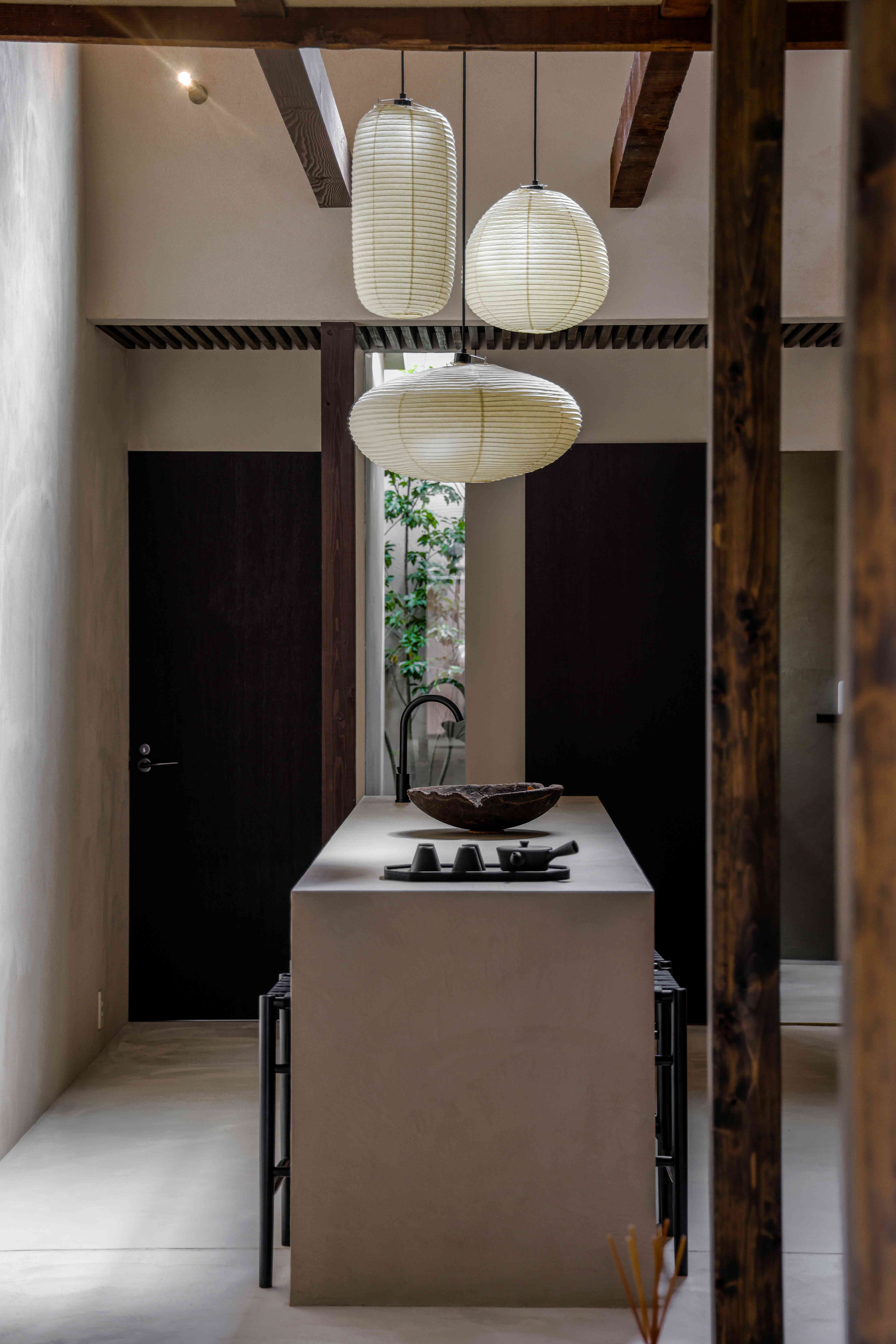 In one of the suites at Maana Kiyomizu, where washi lanterns define a kitchenette space.
In one of the suites at Maana Kiyomizu, where washi lanterns define a kitchenette space.
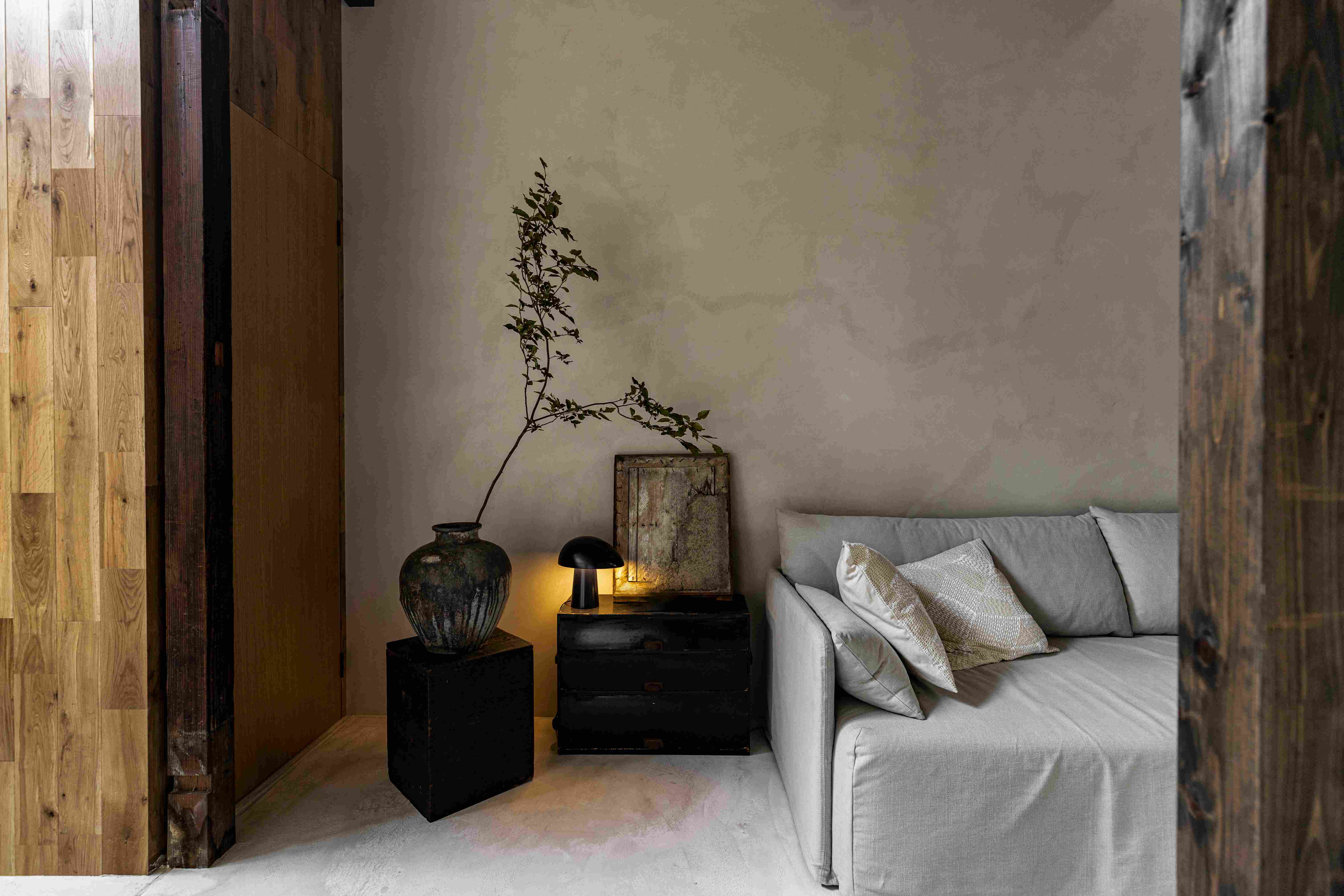 In Maana Kiyomizu, the concept of wabi-sabi grounds the design and styling of the suites.
In Maana Kiyomizu, the concept of wabi-sabi grounds the design and styling of the suites.
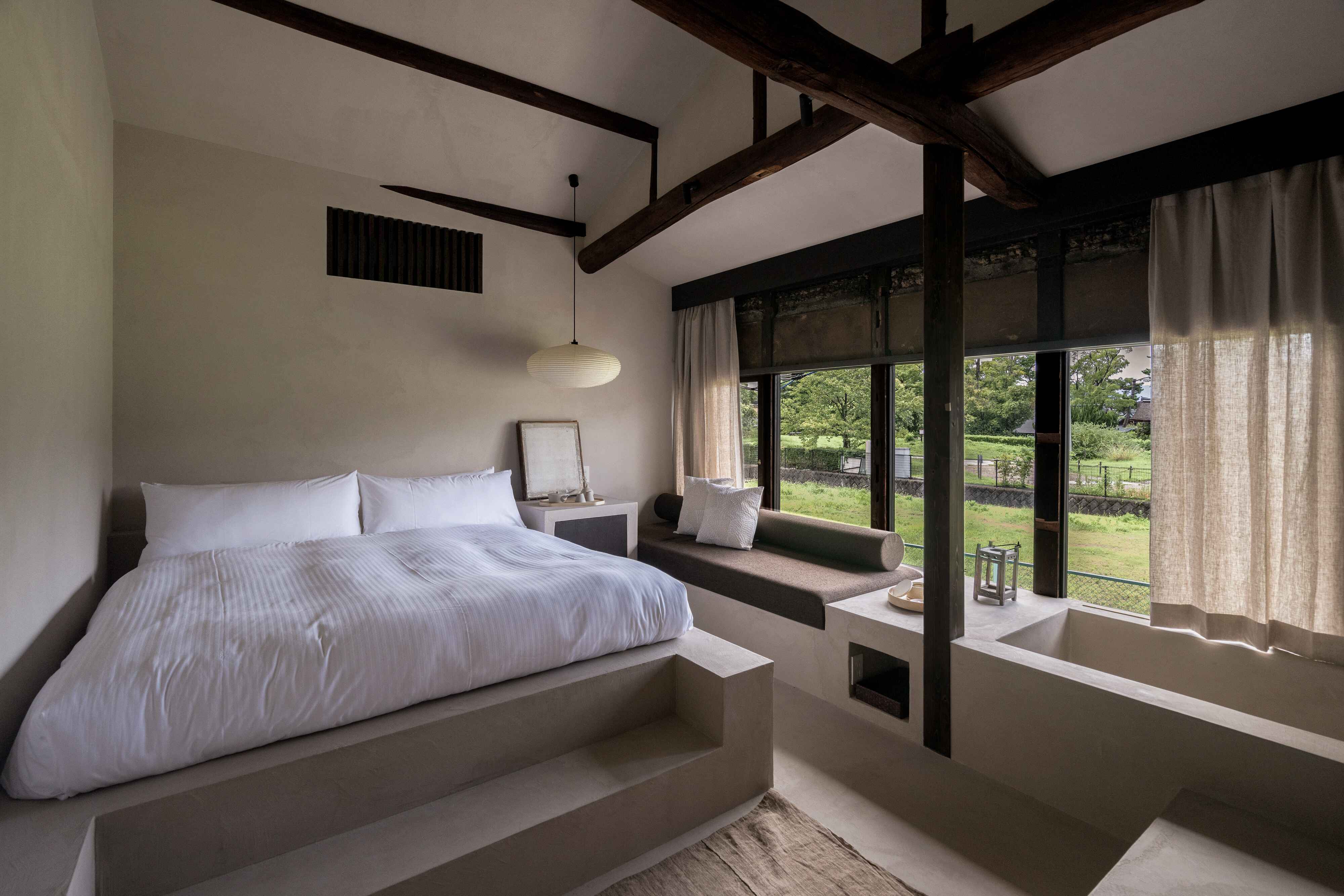 In one of the suites that faces the grounds of the Toyokumi Shrine.
In one of the suites that faces the grounds of the Toyokumi Shrine.
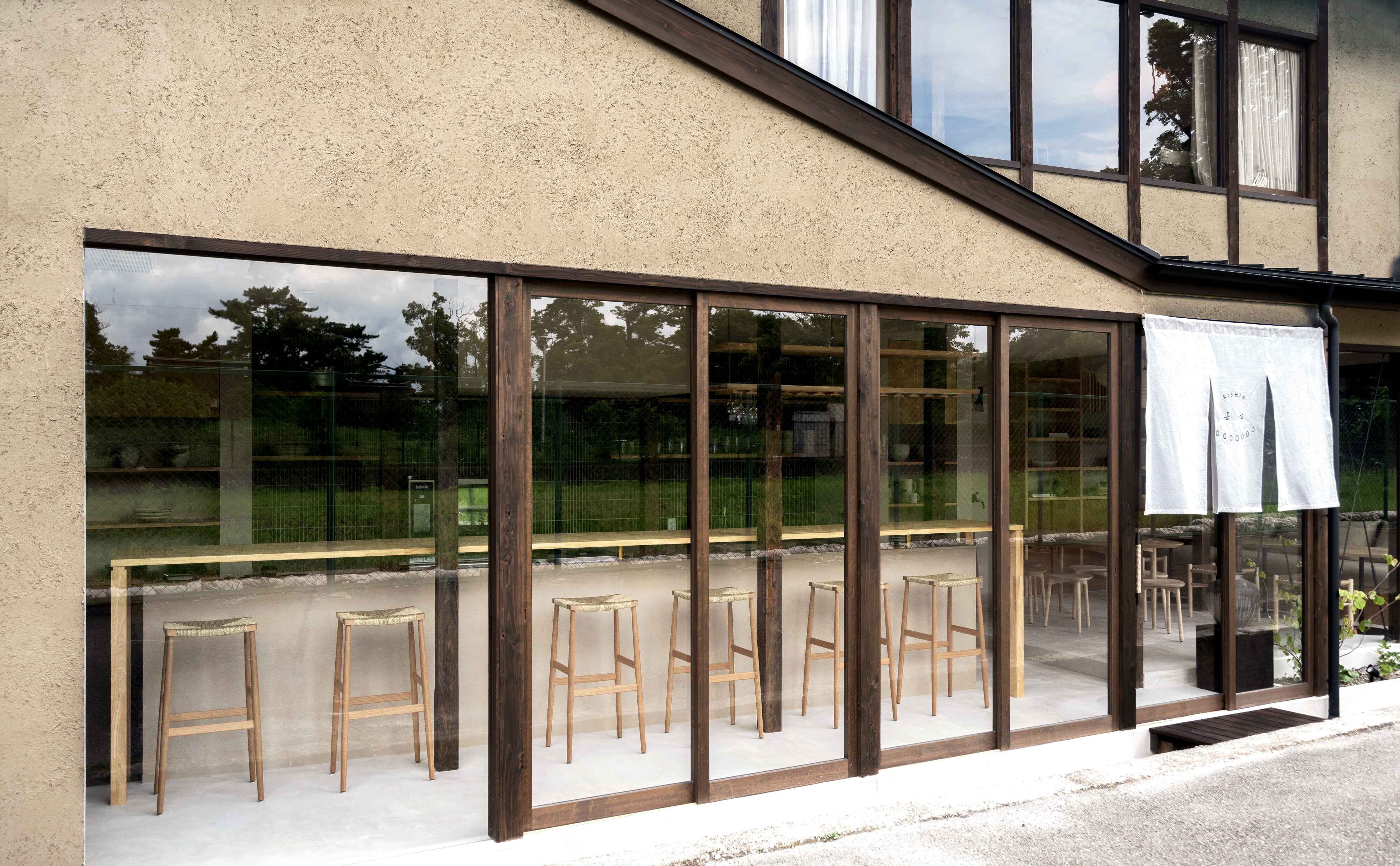 Part of the development includes Kissa Kishin, a cafe serving up seasonal cuisine.
Part of the development includes Kissa Kishin, a cafe serving up seasonal cuisine.
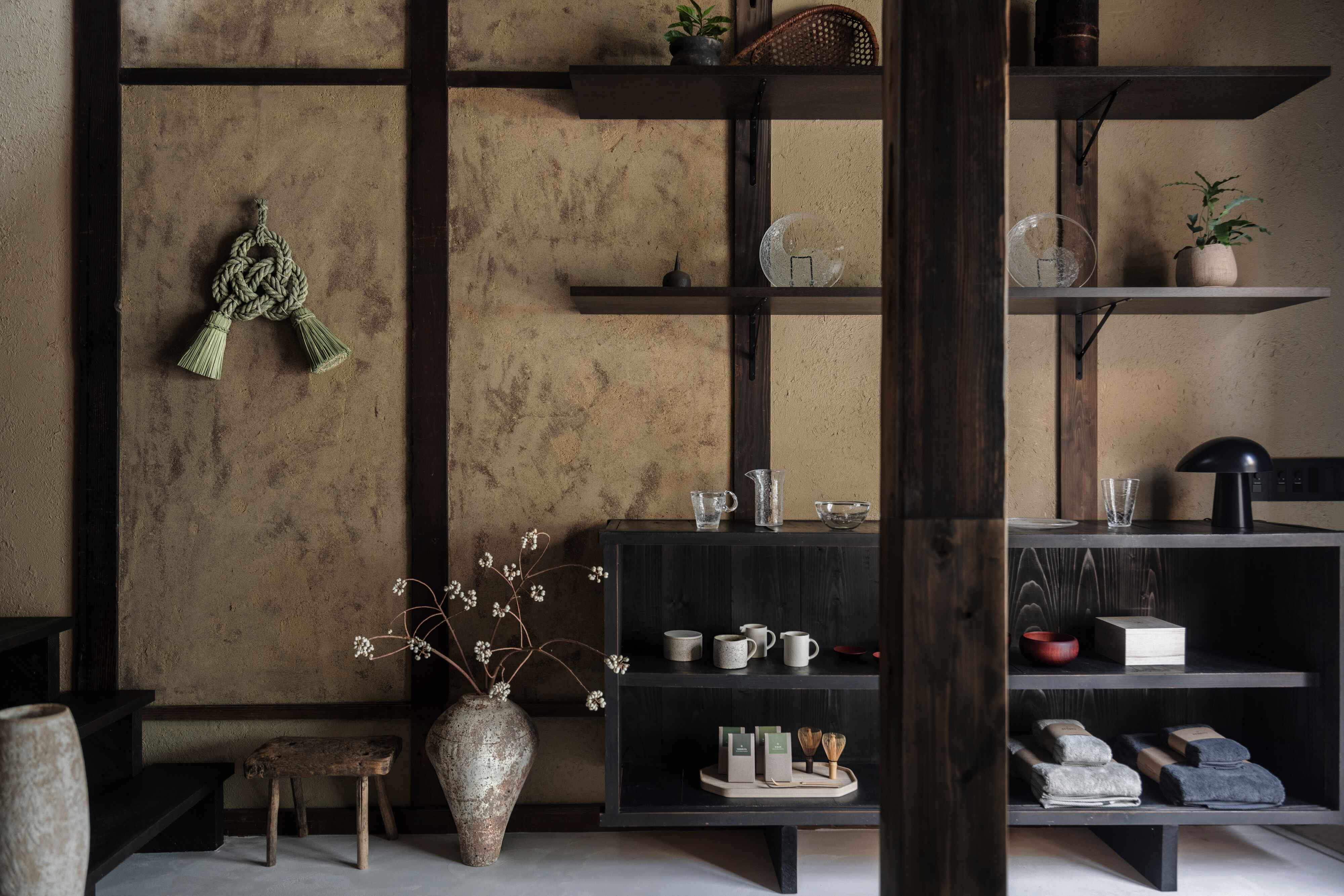




 Back
Back